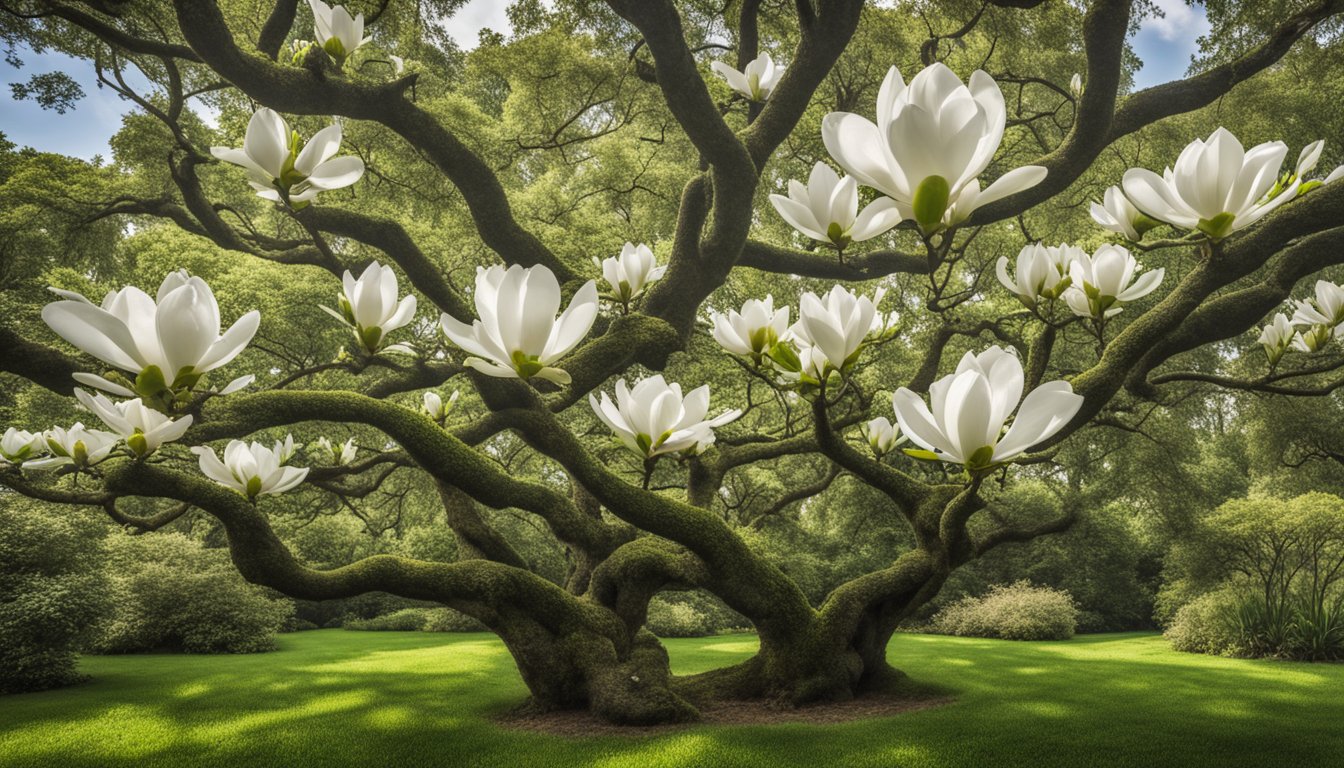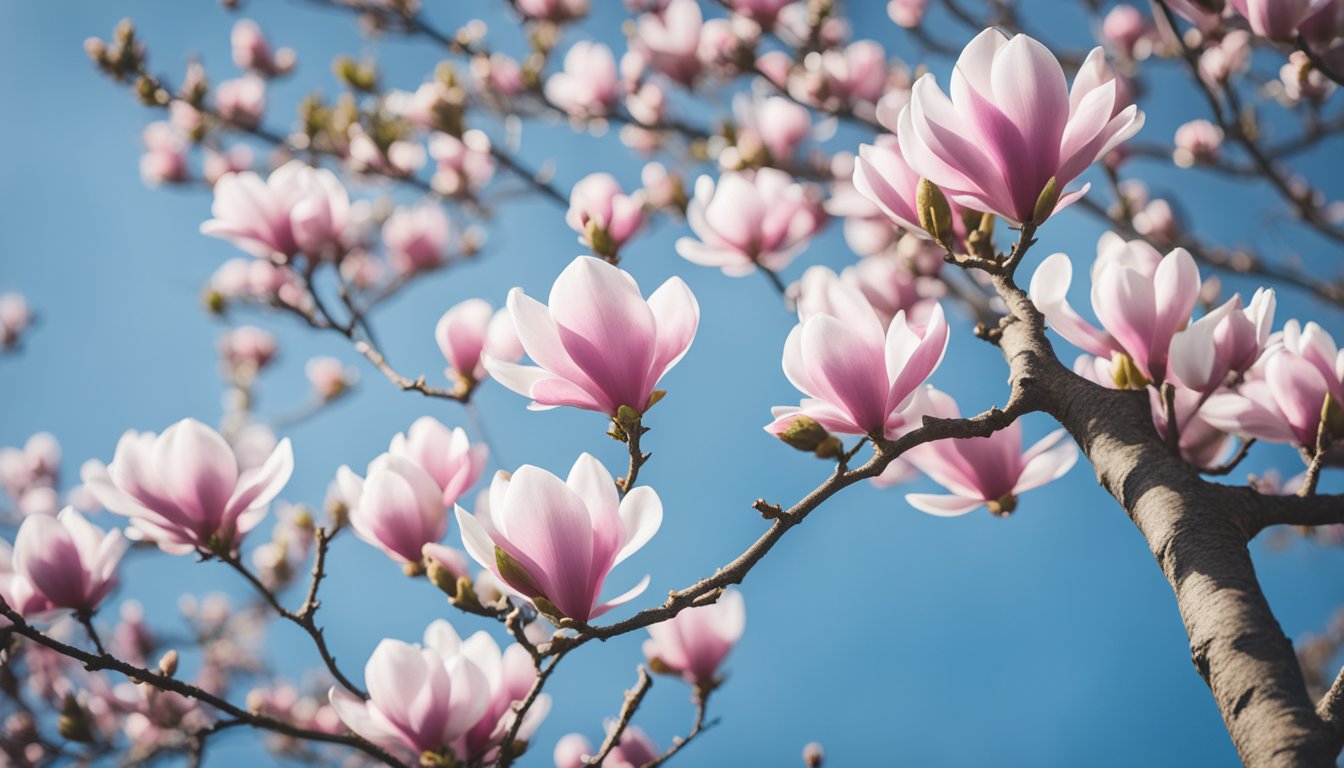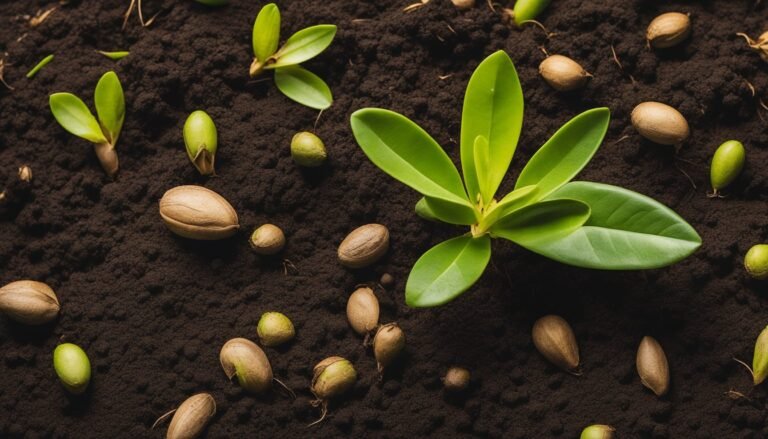Magnolias are among the oldest and most elegant trees in the horticultural world, beloved for their large, aromatic blooms that can serve as a centrepiece for any garden. I’ve observed these trees often bloom in spring with their flowers making a dramatic show on bare branches before the leaves unfurl. There’s a great diversity amongst magnolias too, with species ranging from large shade-bearing trees to smaller, shrub-like varieties. Some magnolias, such as the Southern magnolia, boast evergreen leaves that provide year-round interest.

I find that the key to successful magnolia cultivation lies in understanding their need for well-drained, rich soil and a sheltered location. Though they are seen by many as low-maintenance, magnolias nevertheless require the right conditions to flourish, including ample sunlight for most varieties. It’s also fascinating to recognise the ecological and historical significance of magnolia trees; they’ve been a part of the landscape for millions of years, surviving and thriving through vast climatic changes, and they continue to enrich biodiversity, supporting a variety of wildlife.
Key Takeaways for a great Magnolia Tree Care
- Magnolia trees feature prominently in gardens due to their ancient lineage and striking flowers.
- These trees thrive when given suitable conditions, such as well-drained soil and sheltered positions.
- The historical significance of magnolias is noteworthy, with their enduring presence marking millions of years of ecological evolution.
Botanical Characteristics
Magnolias are a diverse and ancient genus, ranging from towering trees to shrubby species, with impressive flowers often heralding the arrival of spring. Their distinct characteristics are celebrated in gardens and landscapes across the world.
Species and Varieties
The genus Magnolia includes both deciduous and evergreen species, with over 200 varieties identified. Among these, the Magnolia grandiflora, commonly known as the southern magnolia, is a beloved evergreen noted for its large, glossy leaves and fragrant white flowers. In contrast, the Magnolia stellata, or star magnolia, is a deciduous type with multi-petalled white flowers. Hybrid varieties like the Saucer magnolia (Magnolia × soulangeana) offer gardeners a range of colours, from pure white to rich pinks and purples.
- Evergreen Magnolia: Magnolia grandiflora, Cucumber tree
- Deciduous Magnolias: Saucer magnolia, Star magnolia, Loebner magnolia
- Select Hybrids: Lily magnolia, Kobus magnolia
Leaves and Flowers
Magnolia leaves vary from species to species, with evergreen types showcasing thick, glossy foliage that remains throughout the year. Deciduous magnolias, on the other hand, display leaves that drop in the autumn but not before turning lovely shades of yellow or bronze.
The hallmark of the genus, however, is its flowers. Blooms are large, often cup- or star-shaped, consisting of tepals—structures that are not differentiated into sepals and petals. The flowers come in shades of white, pink, and even purple, and are known for being particularly fragrant.
- Evergreen species: Glossy, retained leaves
- Deciduous species: Seasonally shedding leaves
- Flowers: Large, fragrant, with white, pink, or purple tepals
Fruit and Seeds
The fruits of the magnolia tree are often cone-like in structure and can be a striking feature as they ripen in the autumn. Inside, they house the seeds, which can be red or orange and are generally encased in a fleshy coat, attracting birds and other wildlife.
- Fruit: Cone-like in appearance, ripening in autumn
- Seeds: Typically red or orange, encased in a protective, fleshy coat
Cultivation and Care
In my experience, the successful cultivation and care of magnolias hinge on understanding their specific planting requirements and routine maintenance. A well-established magnolia becomes a breathtaking feature of the garden, particularly during blooming seasons, adding charm to outdoor spaces perfect for walking and enjoying fitness activities in Ireland‘s lush landscapes.
Planting and Environment
When I plant magnolias, I select a sheltered spot in the garden that receives full sun to light shade. The ideal soil for magnolias is acidic to neutral pH, well-drained, and rich in organic matter. I often amend the soil with compost to ensure it is fertile. Planting is best done in autumn or early spring to avoid the extremes of summer heat or winter cold. It’s crucial to give them enough space to grow, as magnolias can become large trees or shrubs. Their vibrant blooms can enhance any garden pathway, making it a scenic spot for walking enthusiasts who enjoy fitness routines amidst nature.
- Sunlight: Full sun to light shade
- Soil pH: Acidic to neutral (pH 5.5 to 7)
- Season: Plant in autumn or early spring
- Spacing: Ensure adequate space for growth
Growth and Maintenance
My magnolias require regular watering, especially during dry spells, to establish a strong root system. I apply mulch to retain soil moisture and regulate temperature. Once settled, magnolias are low maintenance, but they do benefit from fertiliser in the spring. Proper care allows these magnificent trees to create a serene environment ideal for mindful walking and fitness activities, encouraging outdoor well-being. Pruning should be minimal; I only remove dead or crossed branches, and this is best done post-blooming to avoid cutting off next year’s blossoms.
- Watering: Keep soil moist, especially in dry periods
- Mulching: Apply mulch annually to conserve moisture
- Fertilising: Annually in spring with a balanced fertiliser
- Pruning: Minimally, and after the blooming cycle
Pests and Diseases
Magnolias are generally hardy, but they can be susceptible to pests like scale insects and diseases such as leaf spot or honey fungus. I vigilantly monitor for signs of distress and treat them with appropriate pesticides or fungicides. Regular care helps prevent most of these issues before they become problematic.
- Pests: Scale insects, among others
- Diseases: Leaf spot, honey fungus
- Prevention: Monitor regularly and treat as necessary
Ecological and Historical Significance

Magnolias have a rich ecological and historical tapestry that I find deeply fascinating. In ecological terms, native magnolia trees serve as vital components in their habitats. The large trees, with their dense foliage, offer shelter and nesting sites for various birds and small mammals. Notably, magnolia flowers are integral in the life cycle of pollinators such as bees; their blooming in early summer signals a bounty for these vital insects.
From an historical standpoint, the fossils of magnolias are among the earliest, tracing back millions of years, which indicates their resilience and longevity. Their historical range covers a broad swath of the Earth, with species indigenous to North and South America, as well as East Asia.
When I consider their prominence in human culture, it’s clear that magnolias have also been cherished in gardens. Their striking, aromatic flowers have become synonymous with elegance and are commonly incorporated into garden landscapes. The evergreen magnolia (such as Magnolia grandiflora) and the deciduous magnolia varieties (like the yulan magnolia) each hold their unique allure and have been cultivated for centuries.
The Southern United States holds a particular affinity for Magnolia grandiflora — commonly known as the Southern magnolia. Conversely, Magnolia virginiana, with its unique flower buds, is native to the Eastern United States and has been valued for its fragrant, creamy-white flowers.
What captivates me most about magnolias is the balance they strike between their role in human history and the natural world, where they contribute to the biodiversity of ecosystems in such an understated yet essential way.
Frequently Asked Questions

In this section, I’ll address some common inquiries about magnolia trees, providing insights into their planting, care, and variety suitability.
What are the ideal conditions for planting a magnolia tree?
Magnolias thrive in acidic to neutral soil and require a sheltered location away from strong winds. Ensuring the right soil conditions is crucial, and if necessary, they can be grown in pots where soil conditions are not ideal.
How can one ensure proper care for a magnolia tree?
Consistent watering, particularly during dry spells, and annual mulching help maintain soil moisture and health. Pruning is minimal, only to remove dead or crossed branches.
Why might a magnolia tree fail to thrive and how can this issue be addressed?
Poor thriving can be due to unsuitable soil conditions, over or under-watering, or exposure to harsh elements. Testing the soil, adjusting watering practices, and providing wind protection can help resolve these issues.
What varieties of magnolia tree are best suited for colder climates such as Ireland?
Star Magnolias and the yellow-flowered ‘Butterflies’ are cold-hardy varieties that can perform well in Ireland’s climate, it’s like having a lush green lawn in Ireland.
How should one maintain an evergreen magnolia tree throughout the year?
Evergreen magnolias such as the Southern Magnolia require little maintenance; however, they benefit from the removal of old leaves and seasonal fertilising to enhance growth and foliage density.
Which dwarf magnolia tree varieties are most recommended for limited spaces?
Dwarf varieties like ‘Little Gem’ or ‘Teddy Bear’ are ideal for small gardens, offering the magnolia’s elegance in a more compact form.


